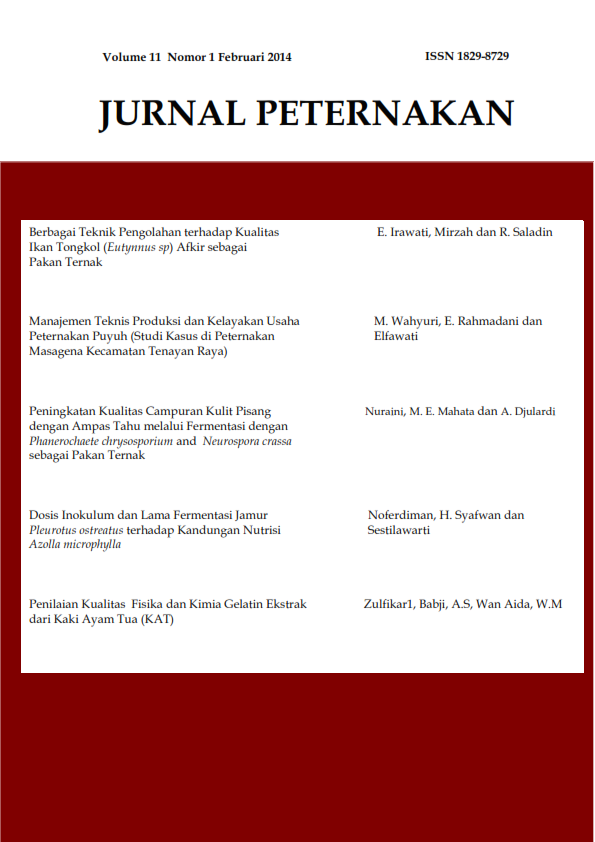MANAJEMEN TEKNIS PRODUKSI PETERNAKAN PUYUH (STUDI KASUS DI PETERNAKAN MASAGENA KECAMATAN TENAYAN RAYA)
DOI:
https://doi.org/10.24014/jupet.v11i1.2323Keywords:
financial feasibility, production, quailAbstract
The purpose of this study was to describe the development of business as well as to analyze the aspects of production and determine the feasibility of breeding quail in Livestock Masagena from 2006 to 2010. The study was conducted from May to June 2011. The data consisted of primary and secondary data. Primary data were hatchability, mortality, hen day egg production, meat production, by product, the characteristic of the respondents, marketing, technical maintenance, financial analysis, fixed costs and variable costs. Secondary data was the data from the Village Office and Head Office. Case study research method was determined by purposive sampling. Data collected by observation and interviews directly with respondents using questionnaires. Data of quail production were analyzed using mean and standard deviation, while for financial feasibility quantitatively was analyzed descriptively. The results showed that the average production Ranch quail egg hatchability Masagena coverr were 78.59%, 3.09% mortality quail, hen day egg production and meat production 62.24%, 152.51 head/day. Financial feasibility analysis results showed a positive NPV, BCR was more than one, and the IRR was higher than the interest rate, indicated that the Ranch Masagena financially viable to run.Downloads
Published
Issue
Section
License
The Authors submitting a manuscript do so on the understanding that if accepted for publication, copyright of the article shall be assigned to Jurnal Peternakan and published by Fakultas Pertanian dan Peternakan Universitas Islam Negeri Sultan Syarif Kasim Riau as publisher of the journal.
Authors who publish with this journal agree to the following terms:
Authors automatically transfer the copyright to the journal and grant the journal right of first publication with the work simultaneously licensed under a Creative Commons (CC BY) that allows others to share the work with an acknowledgement of the work's authorship and initial publication in this journal.
Authors are able to enter into separate permission for non-exclusive distribution of the journal's published version of the work (e.g., post it to an institutional repository or publish it in a book), with an acknowledgement of its initial publication in this journal.
Authors are permitted and encouraged to post their work online (e.g., in institutional repositories or on their website) prior to and during the submission process, as it can lead to productive exchanges, as well as earlier and greater citation of published work (See The Effect of Open Access).

